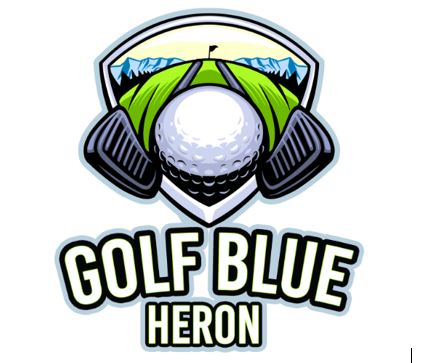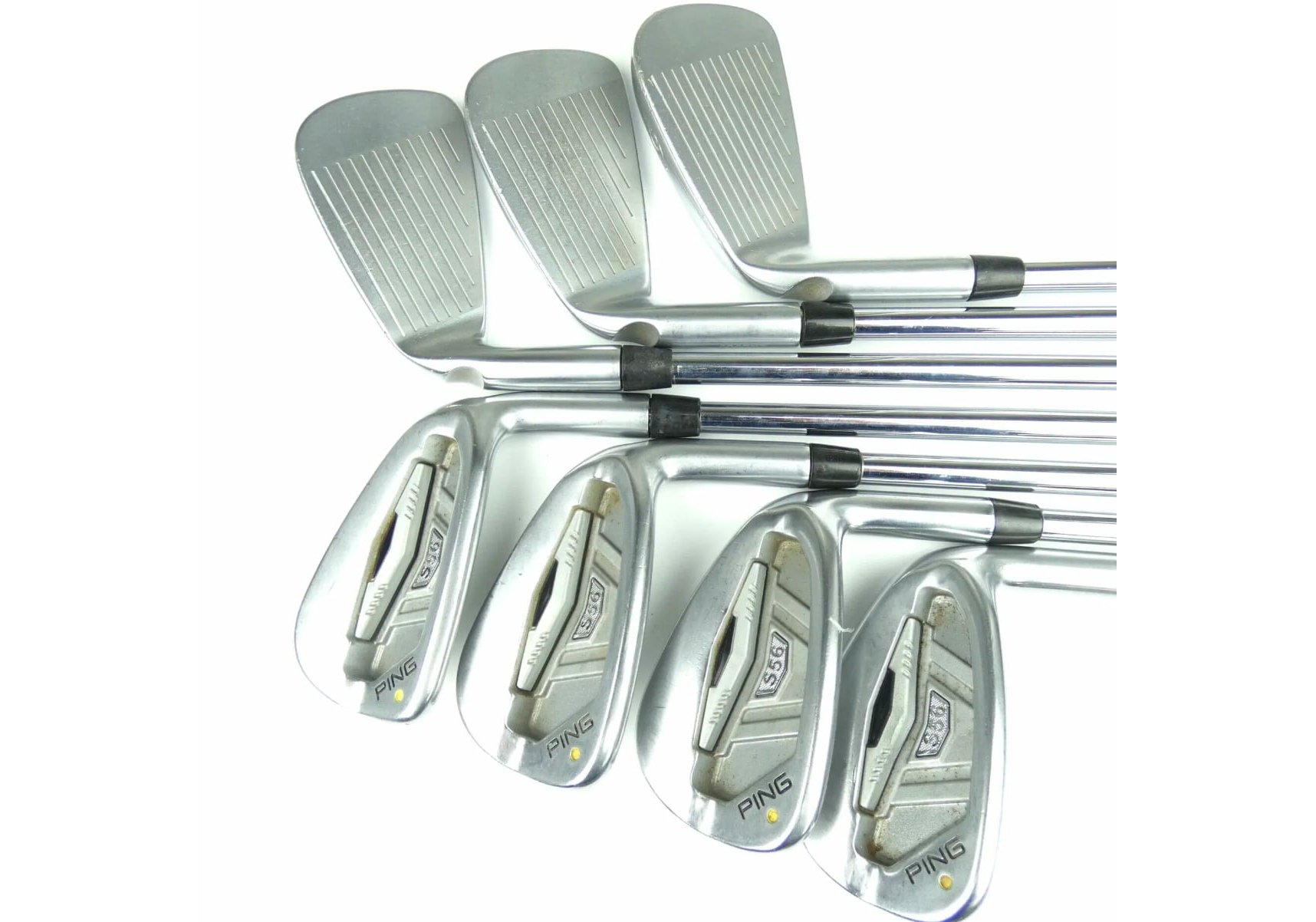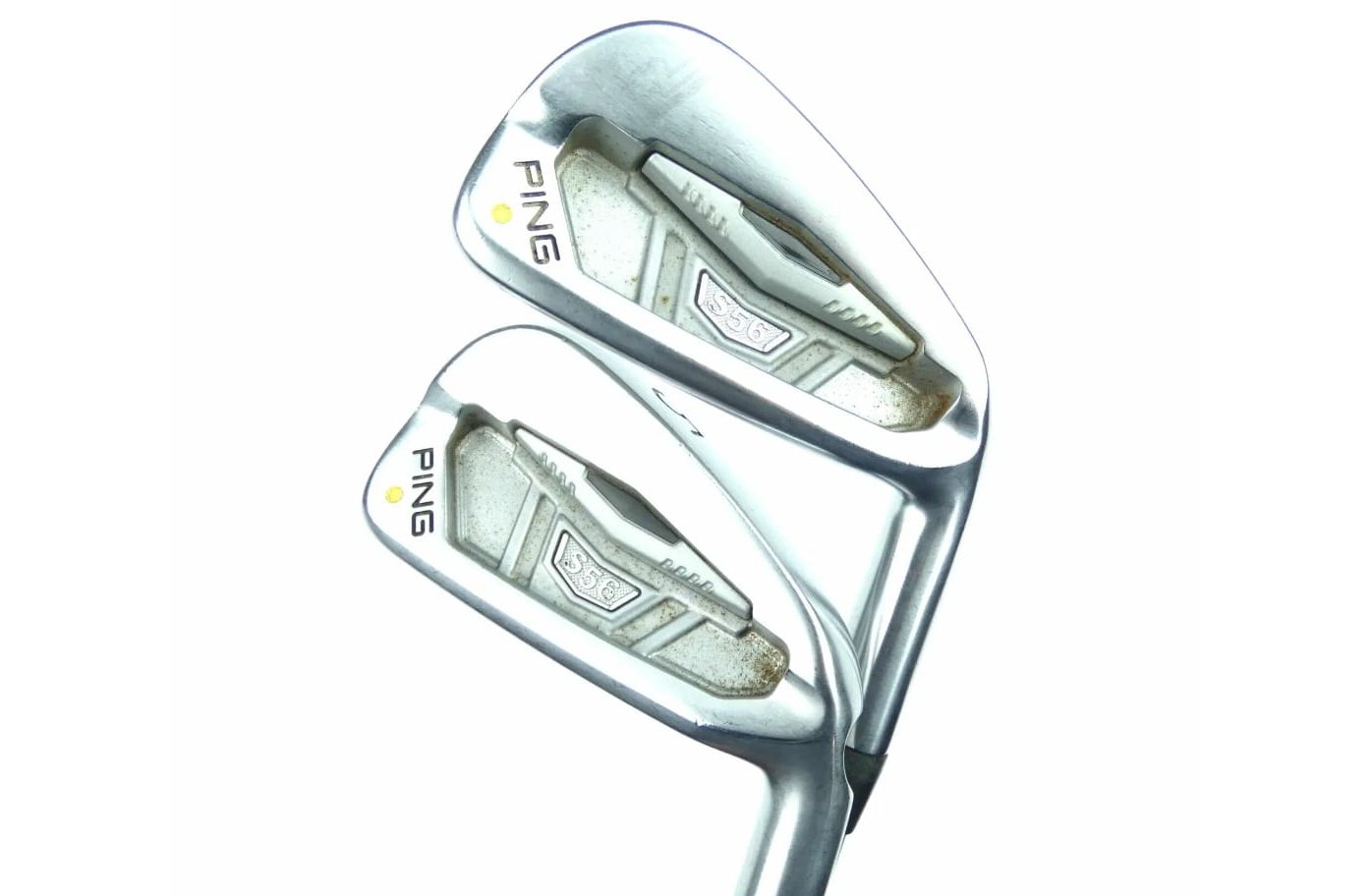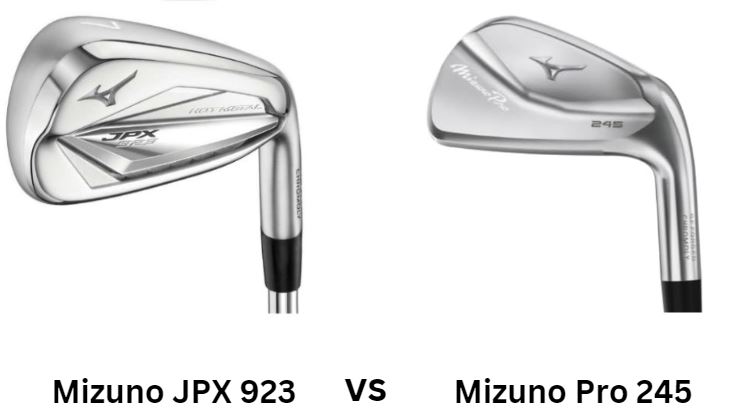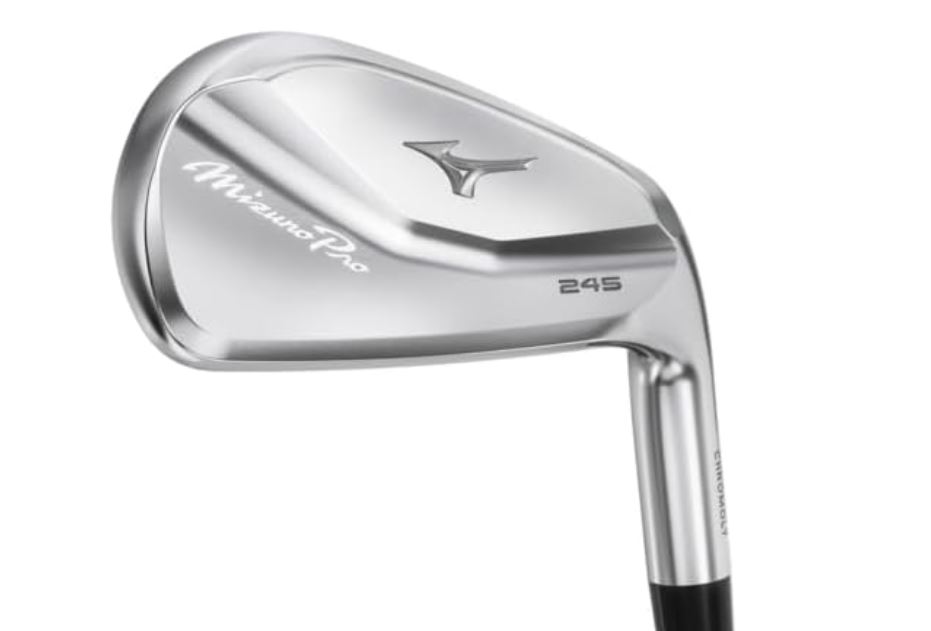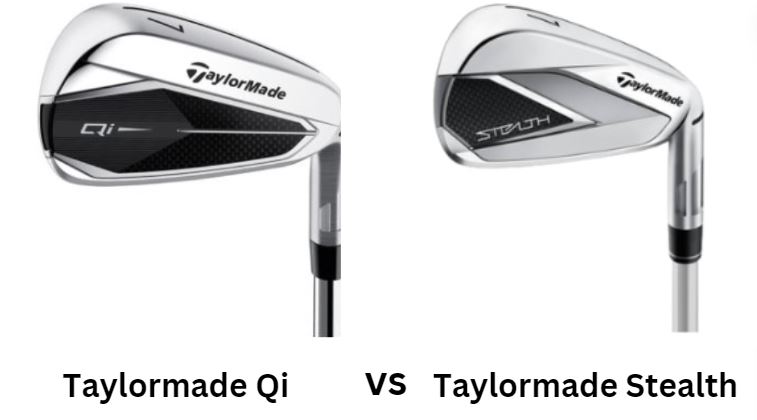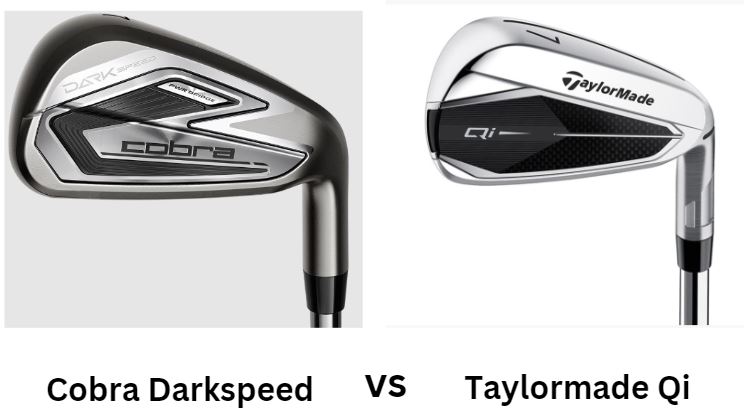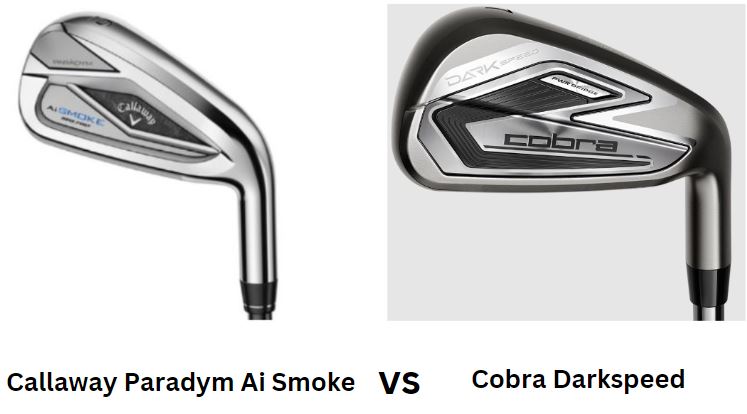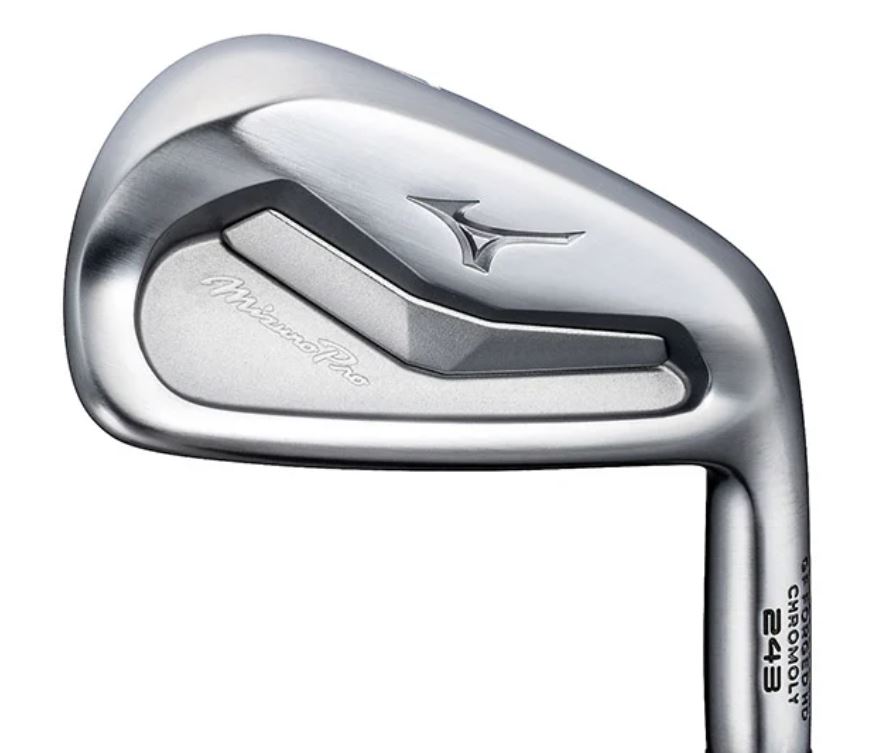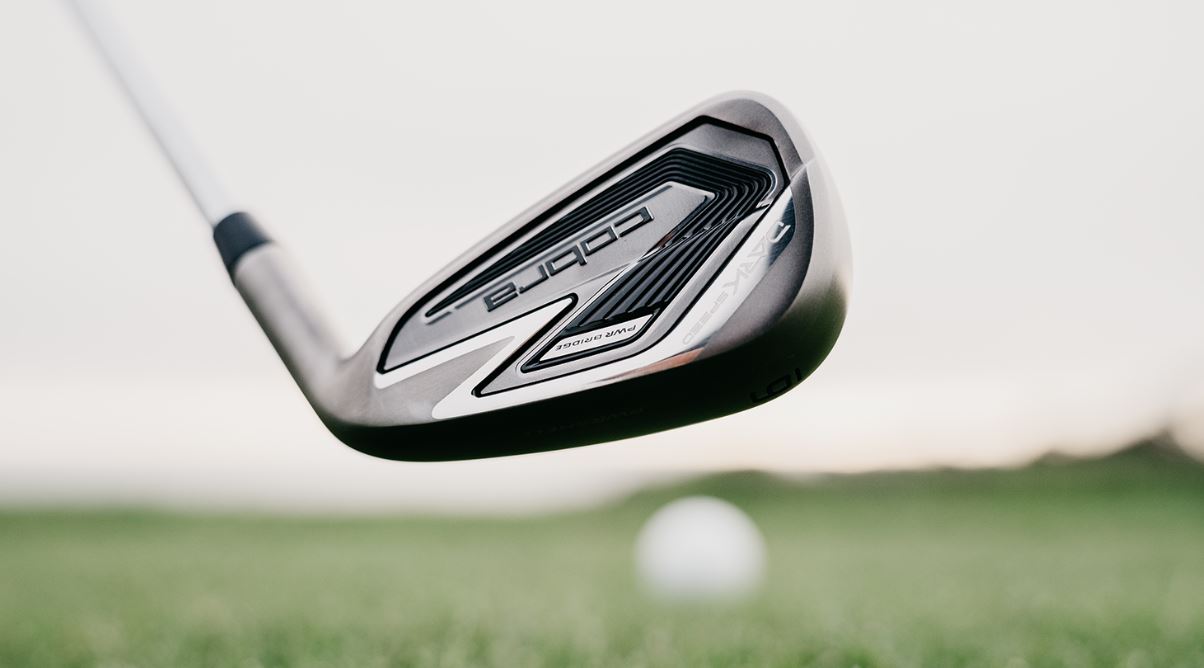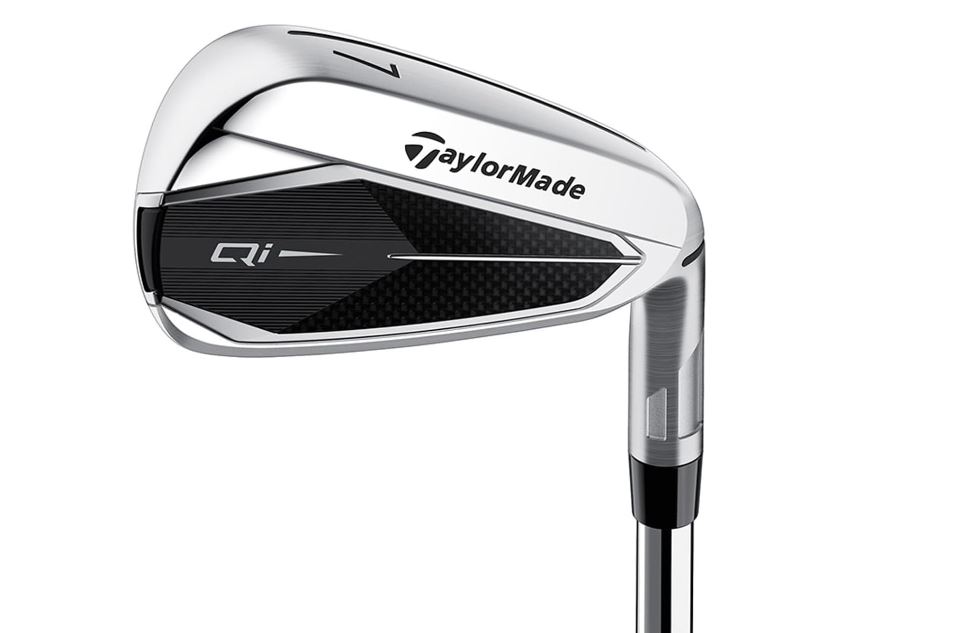Ping S56 Irons Review – Are They Forgiving? What Handicap Are They For?
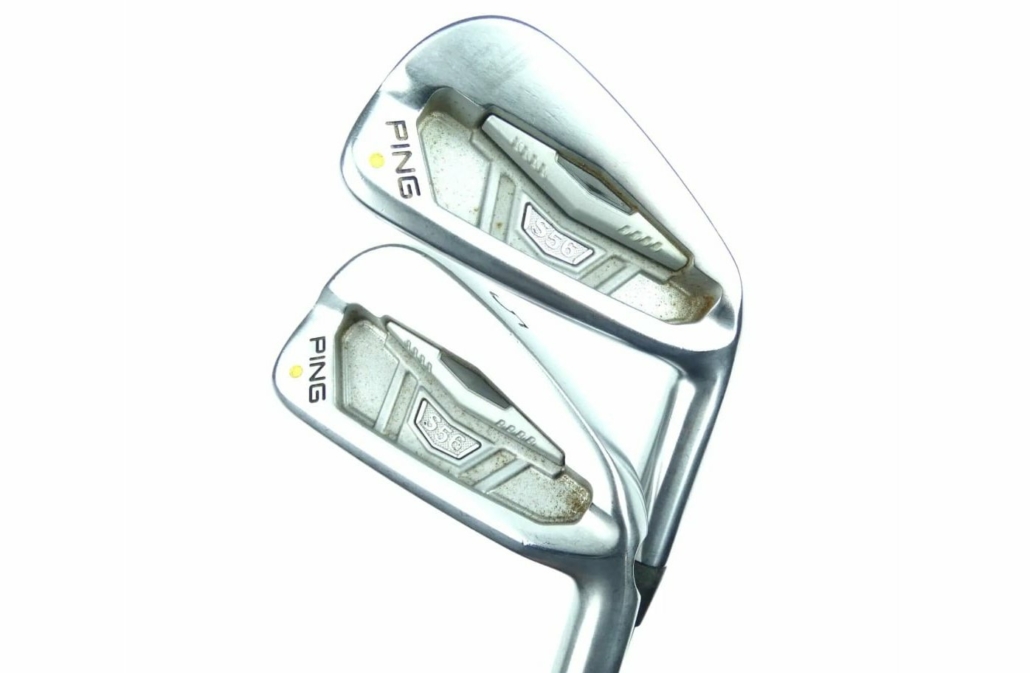
“With the S56 irons, Ping let the world know that they are much more than a company that makes game improvement clubs.”
Nowadays it seems silly to perceive Ping as a company mainly known for their game improvement clubs. But there was a time when that was pretty much what they were all about.
For instance, back in 2008, when the Ping S56 first debuted, Ping had yet to shake the image that they catered mainly to mid and high handicap players. The Ping S series of irons helped to catch the attention of more skilled players and 2008 was sort of a turning point for the company.
In 2023, we know that Ping makes great GI and player’s irons. But what happened when we looked back at where it all began? Do the Ping S56 irons have any value in 2023? Let’s talk about it.
Ping S56 Irons Overview
“The Ping S56 irons are cavity back, cast irons.”
Despite being cavity back irons though, they have a player’s profile at address. The topline is narrow, there is almost no offset to speak of and there is nothing jutting out from behind the head at address. They have a nice, brushed metal finish so they don’t reflect the sun on clear days.
And yes, these are cast irons so while they lack the soft feel of forged irons, the Ping S56 irons still feel very solid. They feature polymer tuning bars that are supposed to soften up their feel and dampen vibrations. And while there are certainly no harsh vibrations on mis-hits, no one is going to mistake these for forged irons.
The Ping S56 irons also feature the stabilizing bars in the cavity. These bars are supposed to add stability to each iron in the set and we are inclined to say that they do their job. The Ping S56’s certainly feel stable even when you miss near the toe. So even though they are geared more towards better players, there is certainly some forgiveness in them.
Are the Ping S56 Irons Forgiving?

“The Ping S56 irons will send your ball left of the line if you’re not careful.”
Most of our testers hit pulls on their first couple of swings with the Ping S56 7-iron. But that didn’t last for very long. Once we got a bit more familiar with the Ping S56 irons, we were easily hitting nice fades.
What was more impressive though was that thin shots were carrying almost as long as face-center strikes. While we weren’t completely missing the grooves or anything like that, we were certainly hitting intentionally thin shots and getting nearly identical trajectory as perfect strikes.
For irons of this size, we were really surprised at the level of forgiveness they offered up. You still need to mind your P’s and Q’s with them; but they are certainly more forgiving than typical player’s irons.
Are the Ping S56 Irons Good for Beginners & High Handicappers?
“They wouldn’t be our first suggestion for beginners and high handicappers.”
Once you get into a groove with these irons, they get easier to hit. But they still require a level of striking accuracy that beginners and high handicappers typically don’t possess.
Should you Buy the Ping S56 or the Ping S55’s?
“The Ping S55 irons offer more of what most golfers would call player’s iron performance.”
They launch lower than the Ping S56’s and they play a bit longer as well…if you have a fast swing speed. The Ping S55 irons are certainly more for single-digit handicappers as they are less forgiving and reward a powerful swing.
We also noticed that the Ping S55 irons yielded slightly tighter dispersion than the Ping S56 irons. After testing these two iron sets side-by-side, it was very clear that the Ping S56’s would be more beneficial to mid handicappers than the Ping S55’s.
If you are a 15 handicap or lower, you can certainly benefit from the added forgiveness of the Ping S56 irons. But the Ping S55’s will really only benefit you if you are a 9 handicap or lower.
Ping S56 Irons

Category: Player’s Cavity Back
Ping S56 Iron Specs
| Club | Loft (degrees) | Lie (degrees) | Length |
| 2-iron | 18.5 | 58.5 | 39.25” |
| 3-iron | 21 | 59.25 | 38.75” |
| 4-iron | 23.75 | 60 | 38.25” |
| 5-iron | 27 | 60.75 | 37.75” |
| 6-iron | 30.5 | 61.5 | 37.25” |
| 7-iron | 34.25 | 62.25 | 36.75 |
| 8-iron | 38.25 | 63 | 36.25” |
| 9-iron | 42.5 | 64 | 35.75” |
Ping S56 – First Impressions
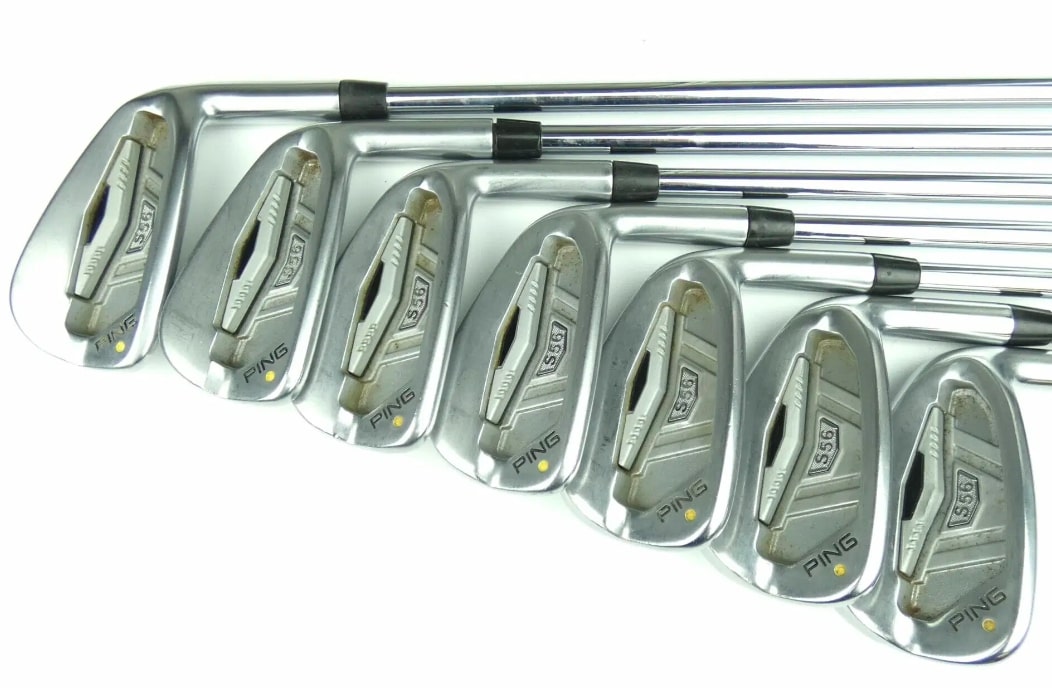
“The first thing we noticed was that the Ping S56’s hadd ferrules.”
This was something of note because a lot of irons that Ping was producing in that era didn’t have ferrules. So we could tell right off the bat that the Ping S56 irons were designed to look more appealing to skilled players who were used to bladed and minimally offset irons.
Once we started testing them, we noticed a high degree of workability. While they naturally want to pull left, it was very easy for our more experienced testers to work the ball left, right, up and down with these irons. Dispersion was also really nice as well: around 14 yards.
Ping S56 Selling Points
- Soft polymer tuning bar
- More durable cast irons (as opposed to forged)
- Cavity back design
- Stabilizing bars
- Low launch
- Minimal offset
